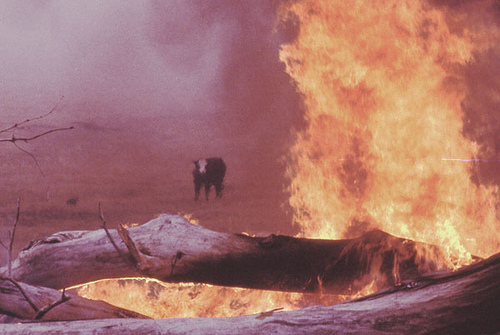Darla Hueske
“We saw the smoke,” says Richard Yturriondobeitia, describing his first glimpse of Long Draw, Oregon’s biggest blaze in nearly 150 years. The fire started July 8, a hot, dry day like many before. Lightning struck, and seven days later, more than 550,000 acres across the southeast corner of the state were scorched. Much of that territory is divvied up as livestock allotments under Bureau of Land Management (BLM) control. The fire came racing toward Yturriondobeitia’s grazing lands. He, his family, and friends tried to herd their cattle, to little avail. Forty-mile-an-hour winds knocked them back. “We got the hell out of there.” They saved themselves, he says. “Couldn’t save the animals.” He rattles off numbers as though from a scorecard of a favorite team’s losses: “112 cows, 46 calves, three bulls.”
The United States has seen nearly a fourfold increase in large wildfires in recent decades. The National Interagency Fire Center keeps tally: As of Nov. 23, over 54,000 fires have burned nearly 9.1 million acres this year; about 1.7 million acres above the 10-year average. When megafires roar, forests t... Read more
